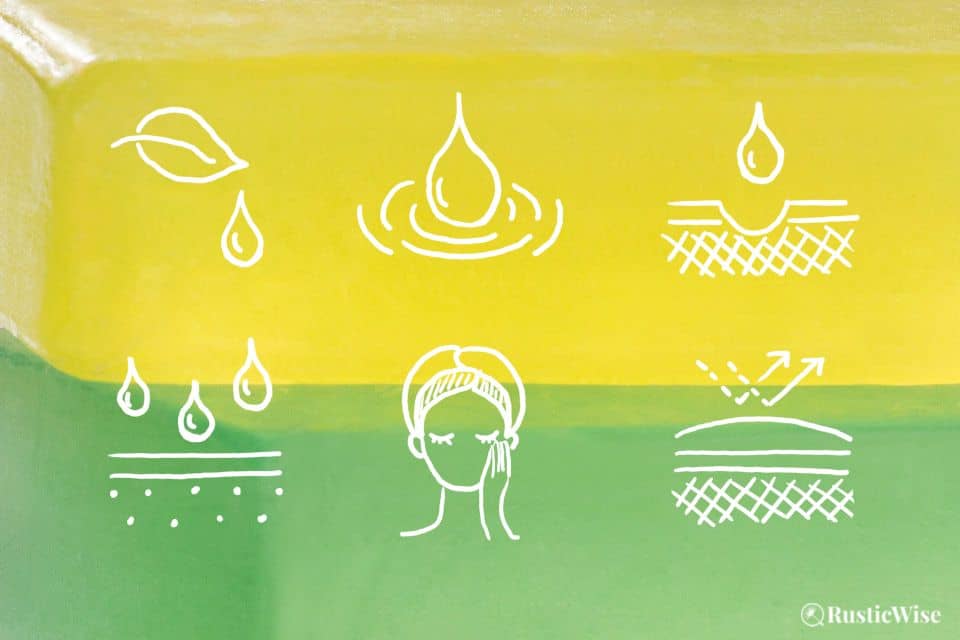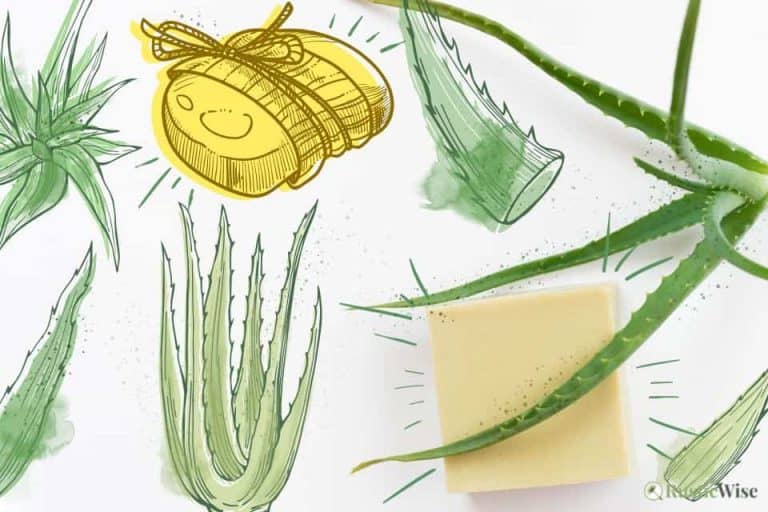11 Nourishing Glycerin Soap Benefits
RusticWise is supported by its readers. When you purchase through links on our site, we may earn an affiliate commission. As an Amazon Associate, we earn from qualifying purchases. Thank You!
Glycerin, also known as glycerol, is a natural, non-toxic member of the sugar alcohol family. It’s a humectant which draws moisture to skin. Not surprisingly this quality makes it popular in skincare and cosmetic products. According to the U.S. FDA’s Voluntary Cosmetic Registration Program, glycerin is the third most used ingredient in cosmetics.¹
One of the most common ways to use glycerol is in soap. There are many glycerin soap benefits: it’s moisturizing, biodegradable, non-comedogenic, and gentle enough for sensitive or acne-prone skin.
We’ll take a closer look at the many benefits of glycerin soap, along with a few downsides. We’ll also go over different types of glycerin soaps and how to make the most of this skin nourishing natural ingredient.
What is glycerin?
Glycerin or glycerol (sometimes spelled glycerine) is a type of natural sugar alcohol compound present in virtually all living things: plants, animals and human organs.²
Glycerin soap is simply soap with added glycerin. Did you know that manufacturers actually remove the natural glycerin (that is a byproduct of the natural soap making process) to use for other products, including creams and lotions? Commercial glycerin soap then is just soap with the glycerin intact (and sometimes extra glycerol) for good measure.
Colorless and odorless, glycerin has a syrup-like consistency (with a slightly sweet taste). It’s non-toxic. You’ll find it used in a wide range of applications from skincare and personal care products, to food processing (as an additive or sweetener), and pharmaceuticals.
Glycerol is a natural byproduct of the saponification of fats (or in simpler terms, the soap making process). Soap making fats or oils can be vegetable oils, or animal fats.
While glycerol can be produced synthetically, it can also be extracted from natural sources like soybeans, dairy products and even animal fats. If using animal-free products is important to you, ensure that you’re using vegetable glycerin.
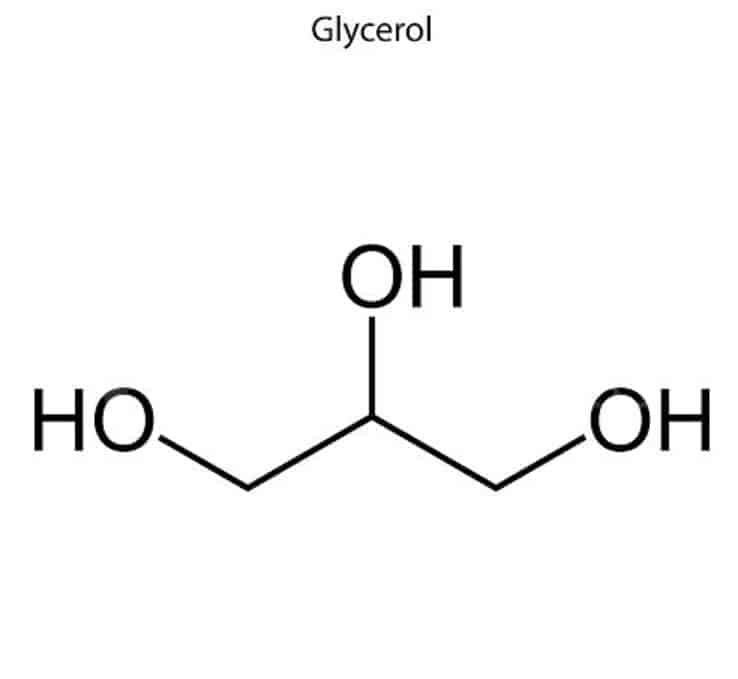
Credit: Vector State
For skincare and cosmetics, glycerol acts as a humectant, lubricant, or solvent.
Humectants are important ingredients as they work to draw and retain moisture to the skin.
Whether the glycerol derives synthetically or otherwise, the body ultimately processes it in the same way as the end product is identical in its chemical structure.
The molecular formula for glycerin is: C₃H₈O₃. It contains three carbon atoms, eight hydrogen atoms, and three oxygen atoms.
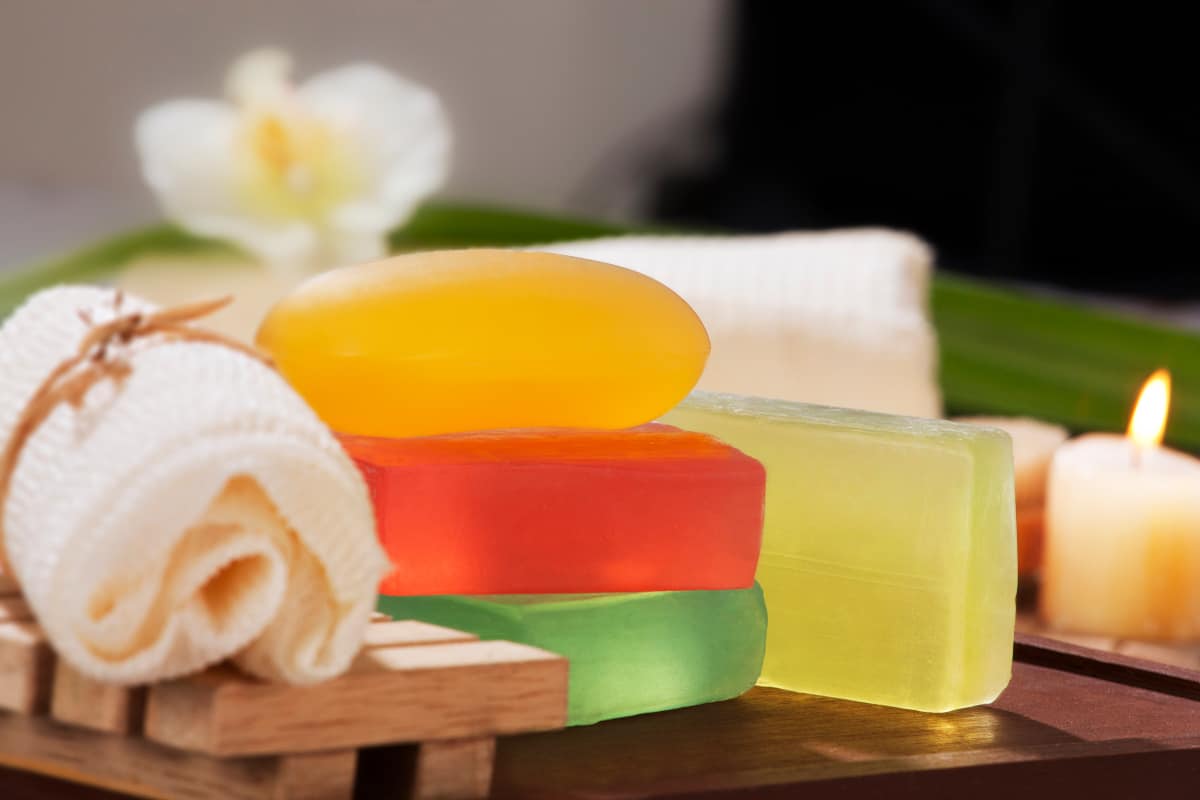
Credit: Vector State
11 glycerin soap benefits
Now that we know a bit more about this natural compound, let’s take a closer look at a few glycerin soap benefits. Glycerin soap comes in both liquid and bar form.
1. Great moisturizer
As a natural humectant, glycerin is one of the best. It works to draw moisture to the surface of skin, making it a great moisturizer for those with dry, flaky skin.
Water soluble, the skin easily absorbs glycerol.
Glycerin’s strong humectant properties act to draw natural moisture to the stratum corneum, the top layer of skin. It draws moisture from the dermis (tissues below the skin) to the epidermis (the outermost layer of skin).
2. Keeps skin smooth and soft
Natural soap with glycerol can help to keep skin soft, smooth, and supple.
A 1993 study examined the efficacy of various emollients and moisturizers on the skin. It found that while glycerin’s impact on skin was slower to appear, the skin smoothing and moisturizing benefits continued, long after application stopped. The outermost layers of skin on participants who used glycerin showed significant improvements in “skin mechanics.”³
Skin emollients such as glycerol help improve skin conditions by locking in moisture which in turn improves skin’s softness.
3. Protects skin against irritants
Skin moisturizer? Check. Improves skin’s smoothness? Check.
Glycerin works as an occlusive agent. It forms a protective barrier on skin, which may protect it from environmental irritants and loss of moisture.
Those with dry skin, or other skin conditions such as eczema, have issues with the skin barrier function. In other words, the skin’s outer layer isn’t able to prevent moisture from escaping, resulting in dry, flaky or inflamed skin.
Glycerin’s thick and moisturizing properties act as a natural skin barrier by locking in moisture and keeping irritants out. This allows skin to naturally repair itself and produce natural oils essential to healthy skin.⁴
4. Natural, non-toxic, and non-irritating
As far as natural ingredients go, glycerin is gentle and suitable for most skin types and does not irritate skin. It’s also non-toxic to boot.
(Of course while glycerol is non-toxic and a non-irritant, it’s still important to check out the other ingredients in natural glycerin soap if you’re prone to allergic reactions.)
Did you know that besides playing an important role in skin care products, glycerin is also used as a sweetener in some foods and beverages? When used as a food additive, the U.S. FDA classifies glycerol as generally recognized as safe (GRAS).¹
5. May help with eczema
Atopic dermatitis is one of the most common forms of eczema. If you suffer from dry, itchy, or scaly skin, you may benefit from a mild cleanser such as glycerin soap.
A random, double-blind study examined 197 patients with atopic dermatitis. They were treated with various moisturizing creams (including one with 20 percent glycerin content). Those treated with glycerin cream experienced significantly fewer adverse skin reactions such as “smarting” (a sharp stinging sensation.)⁵
6. May help promote healthy skin growth
Researchers from the Medical College Of Georgia believe that glycerol may act as a “signal” to direct healthy skin cell growth and maturation. Some skin conditions such as psoriasis promote too much skin cell growth; the result is “dry, thick skin” which fails to properly mature and develop a healthy skin barrier.
These researchers believe that, “glycerol is serving as a substrate to allow the skin to mature properly…”⁶ The result is improved overall skin health which functions as nature intended.
This is good news for those with psoriasis or other skin wounds.
7. May contain antibacterial properties to promote wound healing
You’ll find glycerol as an ingredient in a wide variety of medical applications from making cough syrup sweeter and more palatable, to treating topical wounds.
In hospital settings, glycerin sheets have been shown effective at inhibiting growth of bacteria, and reducing scars (when applied topically) to wounds.⁷
These antibacterial properties in glycerol may also prove beneficial when using bar soap or liquid soaps.
8. Non-comedogenic
If you’re looking for a cleanser that won’t clog pores, the good news is that glycerin is non-comedogenic. It’s considered generally safe for acne.
Of course, when using soap for your face, it’s important to check out the ingredients list for other oils, or harsh detergents that may not be so skin-friendly.
9. May be vegan-friendly
Glycerol derived from plant products is vegan-friendly. Keep in mind that NOT all types of glycerin are plant-based. Some derive from animal fats. It’s important to check the label to ensure you’re using vegetable glycerin that comes from plant-based oils.
10. Biodegradable
As a compound, glycerol is miscible when combined with water. This makes it easy to break down and biodegrade in waterways. It contributes negligible amounts to the surrounding soil, air, or surroundings.⁸
11. Makes soap gentler
Some synthetic ingredients such as sodium lauryl sulfate (SLS) are harsh surfactants that cleanse and strip skin of natural, healthy oils. SLS is also called sodium dodecyl sulfate (SDS).
Some studies have found that by adding glycerin to some SLS solutions, the resulting surfactant is less “aggressive” and therefore gentler on skin. Glycerol works to change the micelle surface making it less penetrable, therefore reducing skin penetration which leads to skin irritation.⁹
Downsides of glycerin soap
While there are plenty of glycerin soap benefits, there are also some downsides.
- May not last as long: As glycerol is water-soluble, it comes as no surprise that a soap bar may not last long if exposed to water. Soap bars with a high glycerin content can easily melt away if left in a wet area. To extend the shelf life of your glycerin soap bar, use a draining soap dish, and wipe dry after use.
- May “sweat”: Have you ever noticed that some translucent soap bars develop “the sweats” when exposed to air? This is normal and expected in glycerol soaps. As glycerol attracts moisture from the environment, beads of moisture may develop on the surface of the soap. Keep your unused soap bars tightly wrapped in a cool, dry place to prevent sweating.
- May be more expensive: You might be paying more for your glycerin soap bar (or liquid soap). As glycerol is a highly coveted natural ingredient, it often comes at a higher cost.
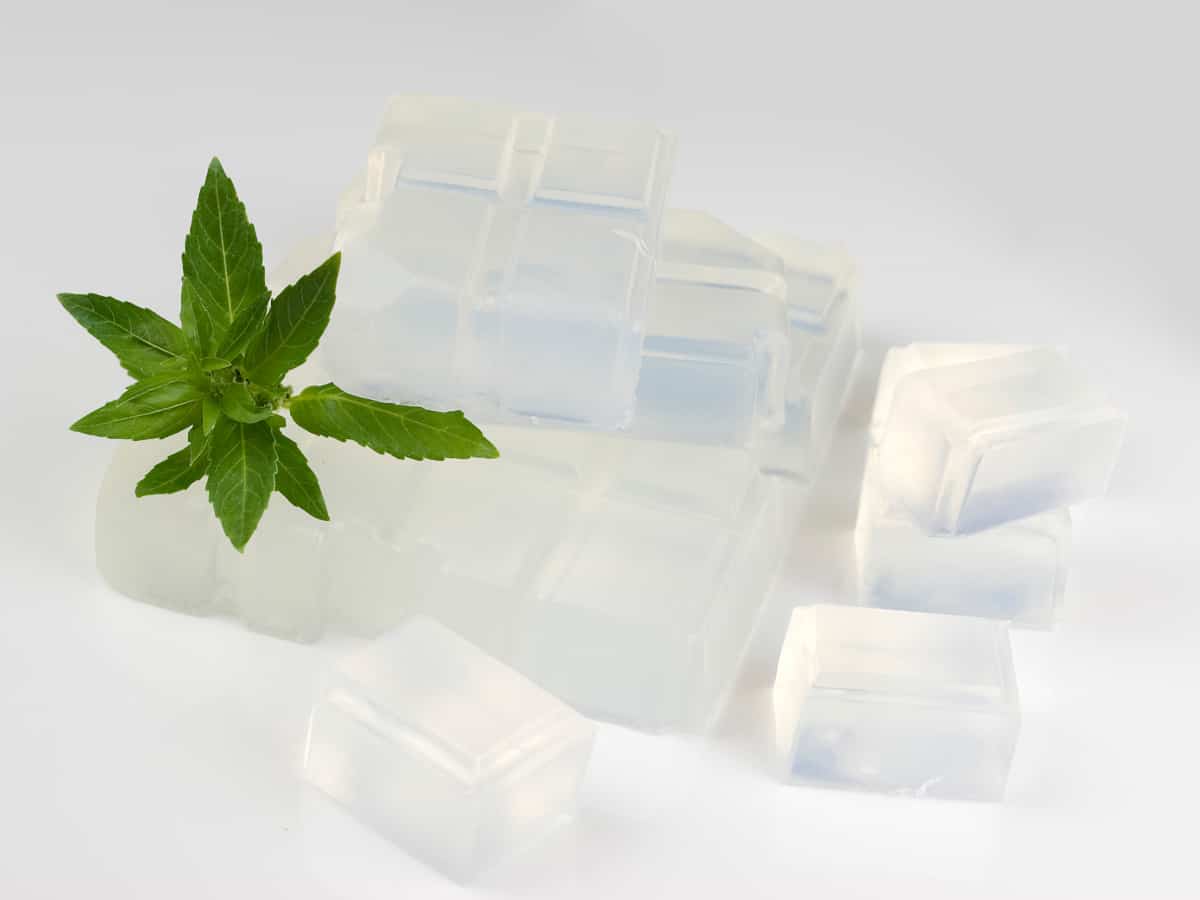
Credit: Yay Images
Types of glycerin soap
There’s no standard definition of what constitutes a bar of glycerin soap. Let’s look at the various types of glycerin soap bars available:
- Homemade natural soap bars (cold process or hot process): These bars of natural soap contain natural glycerin as a byproduct of the soap making process. These bars are not translucent, but opaque.
- Homemade melt and pour soap bars: You can make your own translucent glycerin soap bars by buying clear soap bases that contain added glycerin. Most types of melt and pour soap bases (whether translucent or opaque) have added glycerin.
- Commercial soap bars: Industrially manufactured glycerin soap bars come in a variety of formulations.
Homemade natural soap bars (cold process or hot process)
All natural homemade bars contain glycerin as a byproduct of the saponification process. This means any soap you make using the cold process or hot process methods will have glycerin in the finished soap.
When you combine oils (either from vegetable oil or animal fats) with a solution of distilled water and sodium hydroxide lye, glycerol is a byproduct.
Soap bars made from scratch using the cold process or hot process methods typically aren’t translucent, but opaque. To make cold process or hot process soap bars translucent (like the glycerin bars you can buy at the store), it’s a time-intensive process which involves the addition of sugar and alcohol. It’s not for the faint of heart, nor the beginner soap maker.
In Alicia Grosso’s book, DIY Artisanal Soaps: Make Your Own Custom Handcrafted Soaps! she gives an in-depth tutorial on how to make translucent soap bases using the hot process method.
Homemade melt and pour soap bars
Alternatively, you can make melt and pour soap using glycerin soap bases. This is an easy way to make soap without handling lye.
These clear soap bases have already undergone saponification and contain added alcohols (most likely some combination of glycerol and polyols) to the recipe to give it a transparent look. If you are looking for an easy way to make transparent bars of soap at home, this is it. You can buy glycerin soap bases and have at it!
If you have sensitive skin, it’s a good idea to check out the ingredients in your soap base. Some bases may contain added fragrances or surfactants that may irritate skin.
Commercial glycerin soap bars
Then, there are commercial bars of glycerin soap. These soap bars have a transparent or translucent appearance. Nowadays many commercial soaps are plant-based.
The see-through bars are made using saponification of oils with added sugars and alcohols. These soap bars often contain added glycerin. Manufacturers produce translucent soap bars under extreme temperatures and pressure (courtesy of heavy-duty industrial equipment) to get their trademark look.
Not all glycerin soaps are the same
If you have sensitive skin, or suffer from eczema or psoriasis, you might jump at the chance to try out glycerin soap. Don’t assume every bar of soap is safe for sensitive skin, or is hypoallergenic. It’s a good idea to check the ingredients label. Some bars (even some homemade soaps you buy at farmers’ markets) may contain artificial fragrances or synthetic colorants that can irritate dry skin.
When buying commercial bars of glycerin soap, look for the addition of skin irritating surfactants such as sodium lauryl sulfate (SLS) or sodium laureth sulfate (SLES). While SLS and SLES help to create foam, lather, and are powerful cleaning agents, they may leave your skin feeling dry.
Related questions
Will glycerin as a main soap ingredient be drying?
Too much of a good thing? While glycerin (when used in moderation) can be highly moisturizing, it can have adverse effects when added in high quantities. Liquid glycerin soaps, cleansers, as well as bar soaps may feel sticky if there’s too much glycerin.
And one study found that if the glycerin content is too high, it can lead to transepidermal water loss (TEWL) and increased skin inflammation.¹⁰ Using a humectant alone, such as glycerol, isn’t ideal.
The best soaps and cleansers strike a balance between the moisturizing properties of a humectant, along with skin nourishing emollients (such as olive oil).
What’s the difference between glycerin and Castile soap?
Both glycerin and Castile soaps are available in liquid or as solid bars. Traditionally, Castile soap used pure olive oil as a base. But nowadays, Castile soap can be made a variety of other plant oils including coconut and palm oil. Castile soap bars are opaque.
Glycerin bar soap derives from a variety of plant or animal oils. Commercial glycerin soap bars have added sugars or alcohols added to get a transparent appearance. They may also have added glycerin.
What’s the glycerin content in soap bars?
According to Stephenson Personal Care (makers of soap products), most melt and pour soap bases contain between 15 and 25 percent glycerin. They estimate that roughly 5 percent of glycerin is produced as a natural byproduct of saponification; the rest of the glycerin is added.
New to making soap? 🧼❓
👉We have a fantastic overview on the whole soapmaking process here: read our Timeless Guide To Soapmaking.
If you would like to see our soapmaking posts organized by topic type, see our Soapmaking Collection.
Would you like more timeless tips via email?
Fun tips to help you live an independent, self-sustaining lifestyle. Opt-out at any time.


References
- Chemical Safety Facts, Glycerol, https://www.chemicalsafetyfacts.org/glycerol/. Accessed April 2022.
- Cosmetics Info, Glycerin, https://www.cosmeticsinfo.org/ingredients/glycerin/. Accessed April 2022.
- Overgaard Olsen, L., & Jemec, G. B. (1993). The influence of water, glycerin, paraffin oil and ethanol on skin mechanics. Acta dermato-venereologica, 73(6), 404–406. https://doi.org/10.2340/0001555573404406
- Fluhr, J. W., Darlenski, R., & Surber, C. (2008). Glycerol and the skin: holistic approach to its origin and functions. The British journal of dermatology, 159(1), 23–34. https://doi.org/10.1111/j.1365-2133.2008.08643.x
- Lodén, M., Andersson, A. C., Anderson, C., Bergbrant, I. M., Frödin, T., Ohman, H., Sandström, M. H., Särnhult, T., Voog, E., Stenberg, B., Pawlik, E., Preisler-Häggqvist, A., Svensson, A., & Lindberg, M. (2002). A double-blind study comparing the effect of glycerin and urea on dry, eczematous skin in atopic patients. Acta dermato-venereologica, 82(1), 45–47. https://doi.org/10.1080/000155502753600885
- Medical College Of Georgia, Glycerin May Help Skin Disease, Study Finds, www.sciencedaily.com/releases/2003/12/031203075525.htm. ScienceDaily. Accessed April 2022.
- Stout, E. I., & McKessor, A. (2012). Glycerin-Based Hydrogel for Infection Control. Advances in wound care, 1(1), 48–51. https://doi.org/10.1089/wound.2011.0288
- ScienceDirect, Glycerol, https://www.sciencedirect.com/topics/chemistry/glycerol. Accessed April 2022.
- Walters, R. M., Mao, G., Gunn, E. T., & Hornby, S. (2012). Cleansing formulations that respect skin barrier integrity. Dermatology research and practice, 2012, 495917. https://doi.org/10.1155/2012/495917
- Chularojanamontri, L., Tuchinda, P., Kulthanan, K., & Pongparit, K. (2014). Moisturizers for Acne: What are their Constituents?. The Journal of clinical and aesthetic dermatology, 7(5), 36–44.
- Stephenson Personal Care, Ingredient Spotlight: Glycerin as an Ingredient in Soap, https://www.stephensonpersonalcare.com/blog/2017-06-19-ingredient-spotlight-glycerin-as-an-ingredient-in-soap. Accessed April 2022.

Author: Theresa Tesolin
Theresa is co-founder of RusticWise. She helps people unleash their inner DIY spirit by encouraging them to get dirty and make or grow something from scratch.

